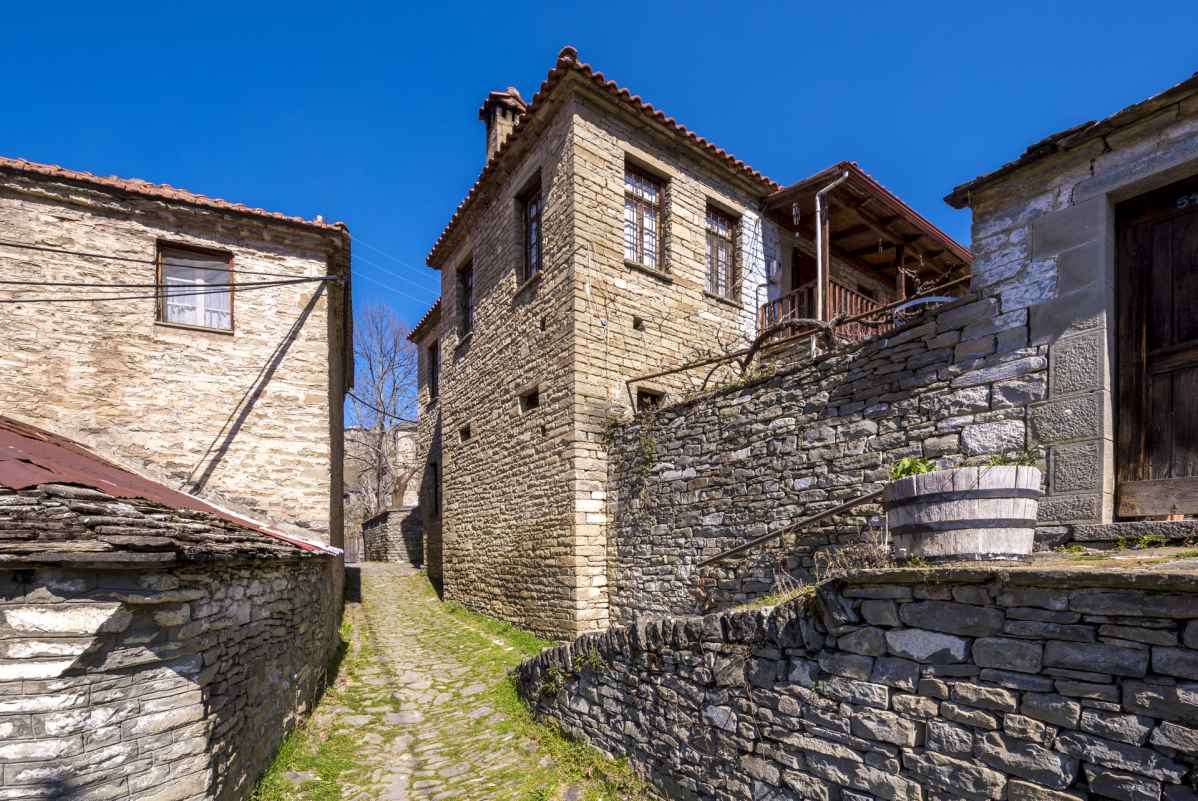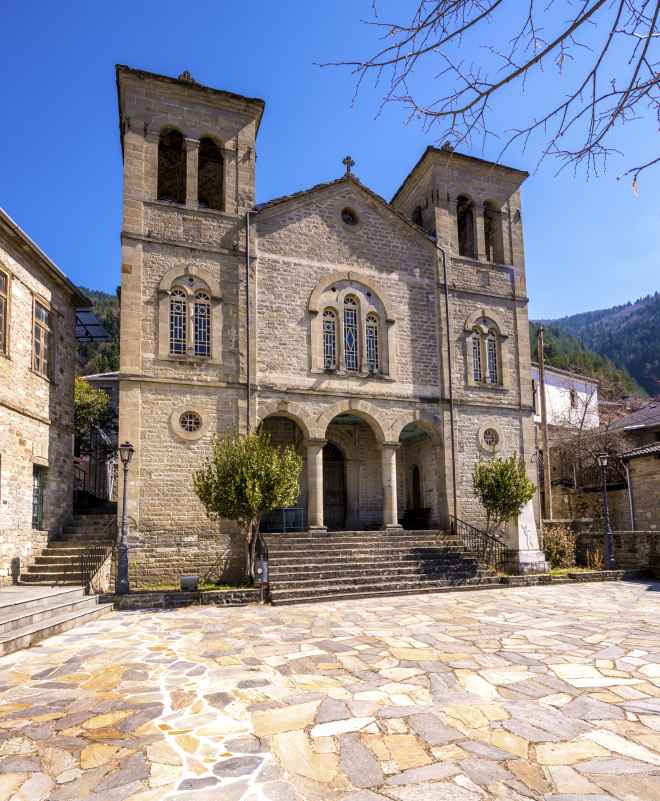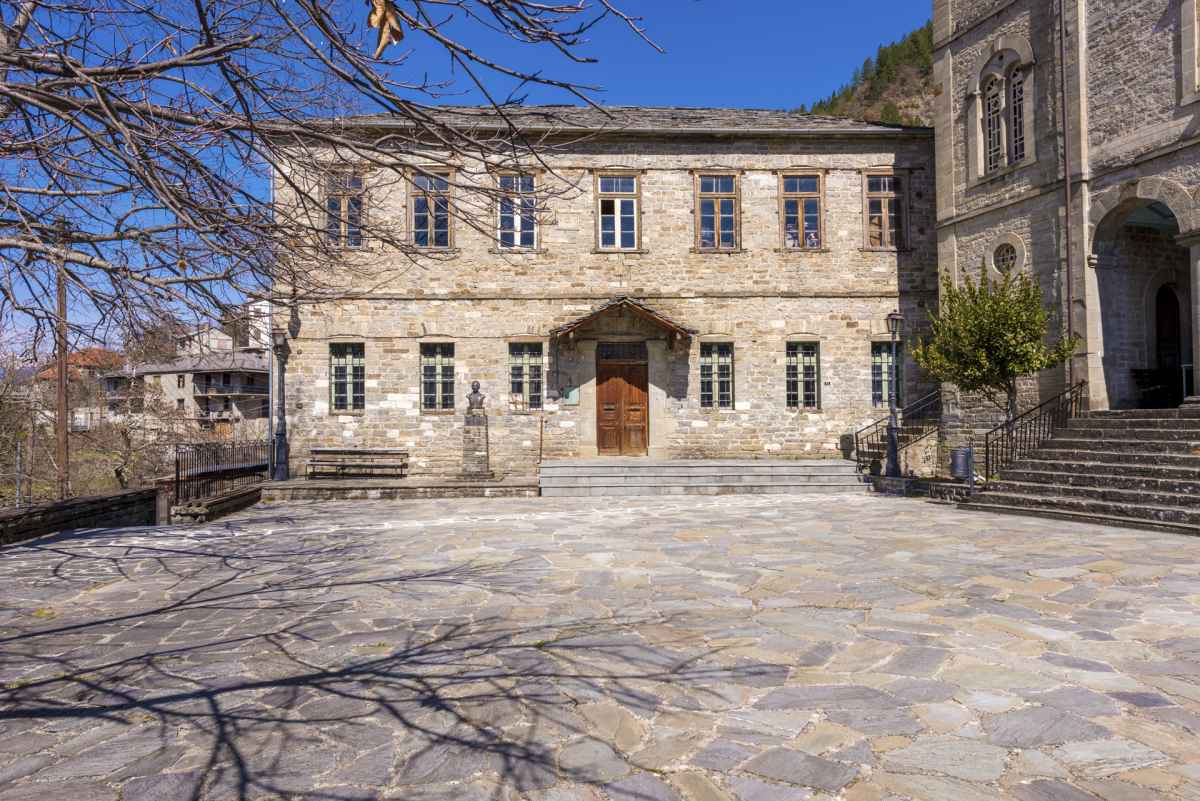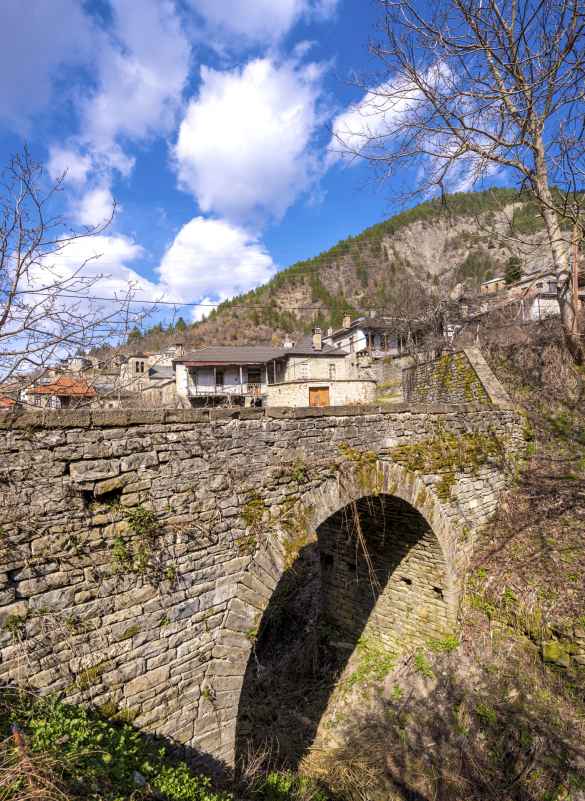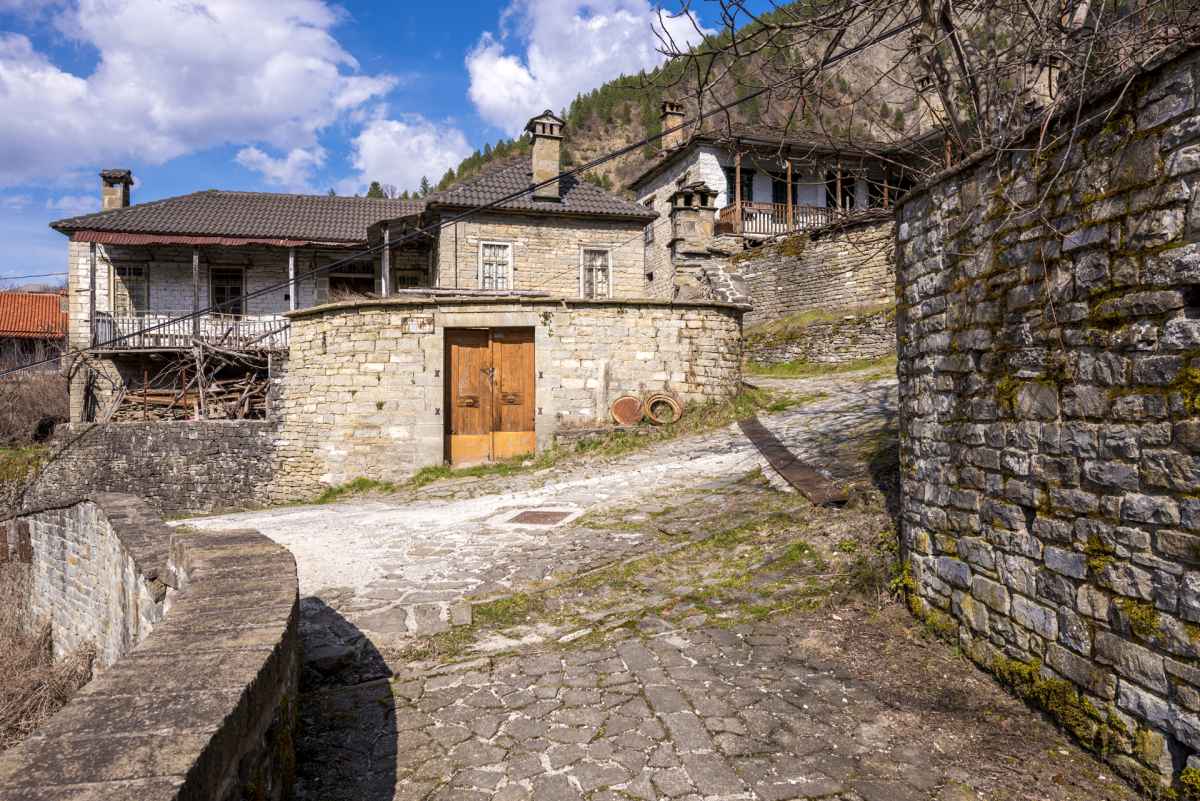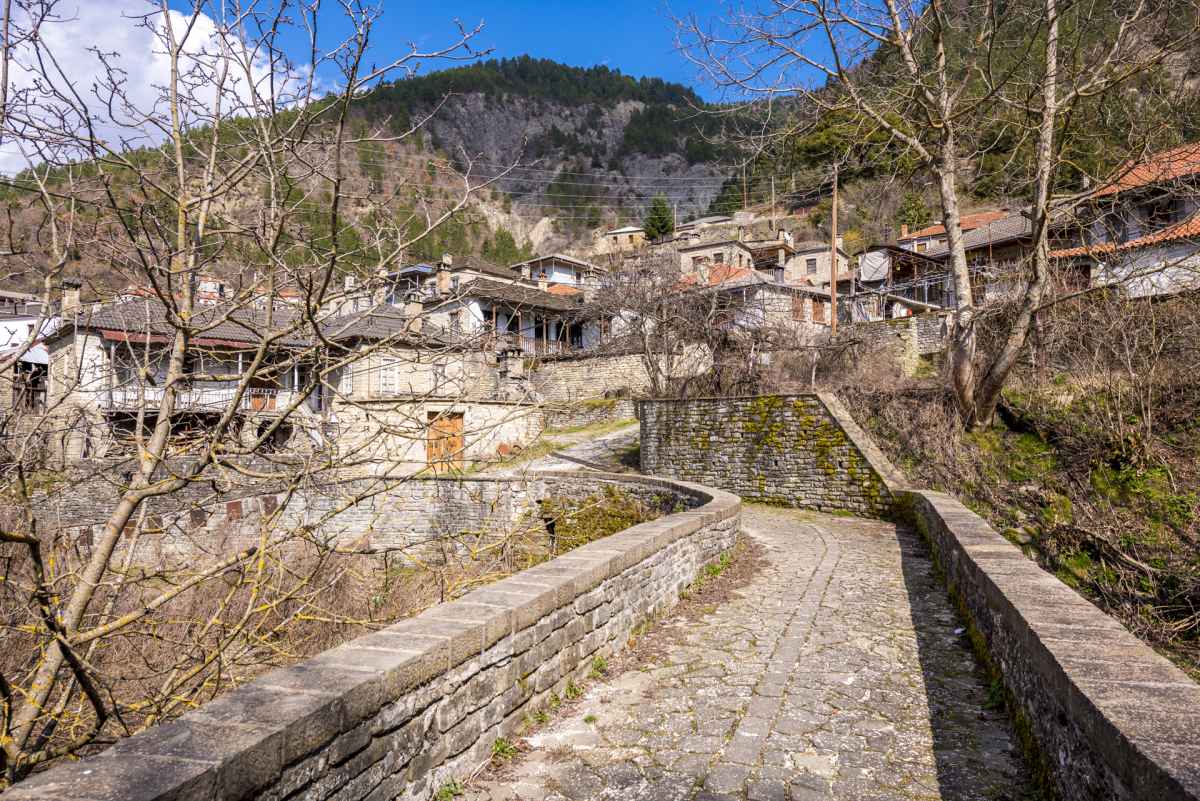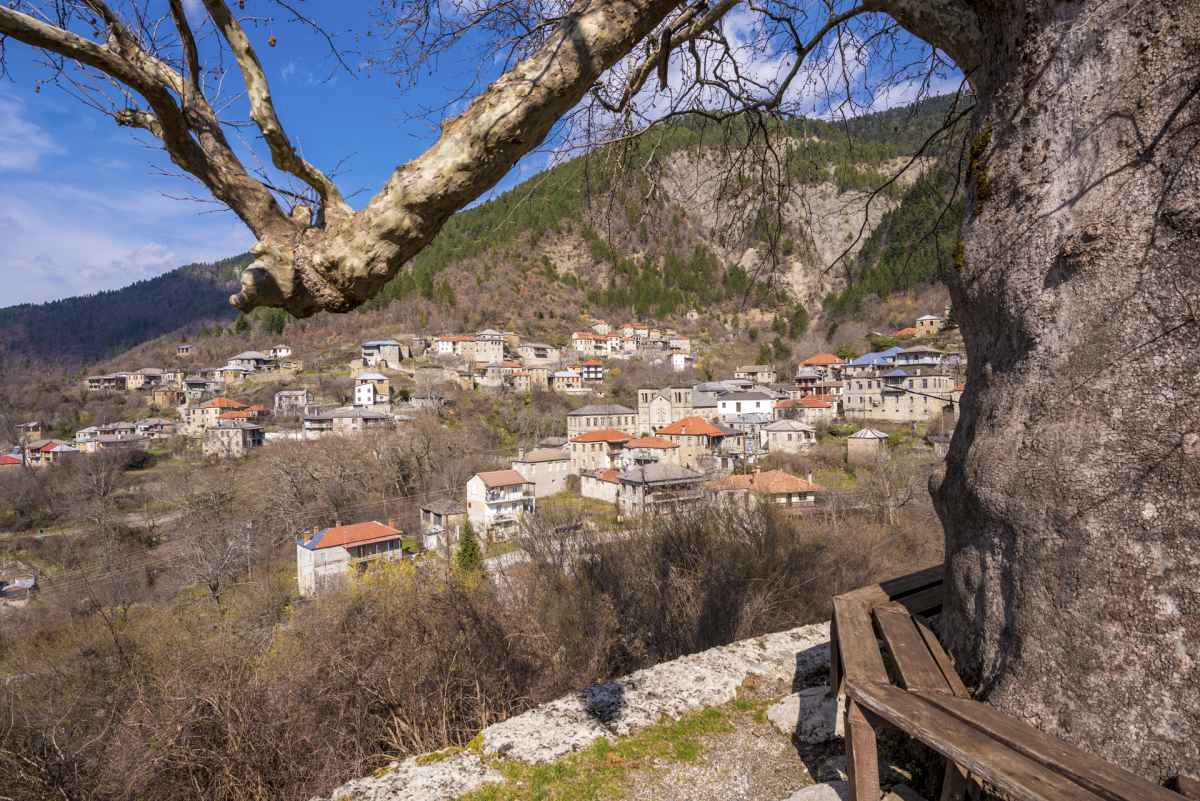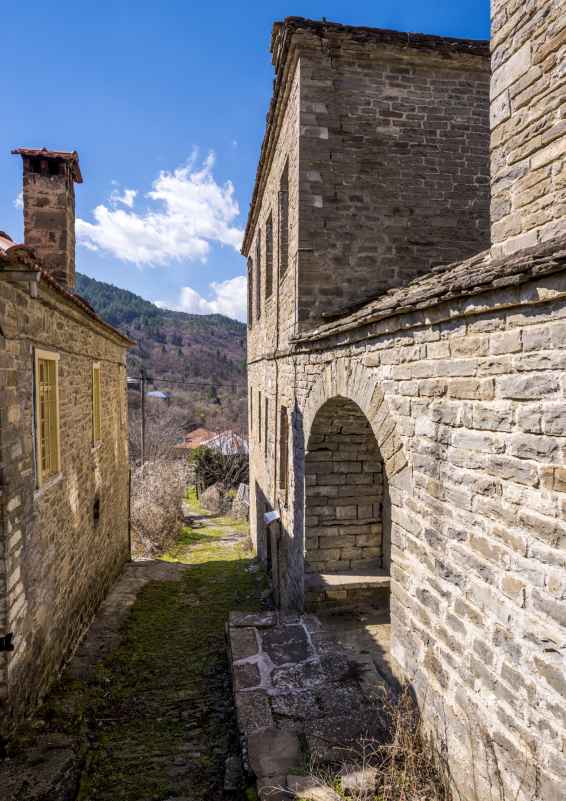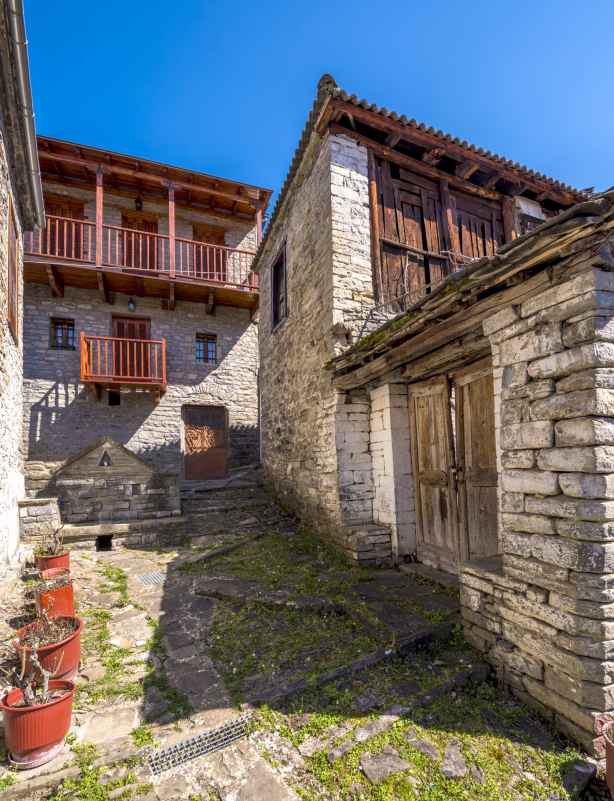Video
Village
Kastaniani is built at an altitude of 880 meters on the western foothills of Mount Gyftissa (1750 meters) and is 28.7 km from Konitsa. One of the main features of the village are the bridges that connect the individual districts of the village, the fountains and the seventeen churches and chapels that form a protective circle around the village, the parish church of St. Nicholas constitute the focus. During the summer months the emigrants return to their birthplace to renew ties with the fatherland and to take part in famous festivals of the village, that of St. John (June 24) and the feast of St. Paraskevi organized in July 26.
History
Tradition has it that the first inhabitants to be established in Skouria position from where they will move around 900 m. X. in Malnitsa position. At that point they identified remains of houses, pottery and building materials, illustrating the installation of the residents in the area. The third installation of the village according to the inscription plate which is fitted on the lintel of the church of the Virgin Mary at the end of Galina district took place in 1018. In the following years Kastaniani will accept Bulgarian raids (1025), Serbs (1059) and the Slavs (1071). [1]Residue of these troubled years are the names of certain places in the region. In 1438 the area ofKonitsa will come under Ottoman rule. During the period 1775-1780 will be tested by the repeated incursions of Albanian gangs, a situation which would last until 1790 when Ali Pasha will be able to enforce order in the provinces of Premeti, Kolonia and Konitsa. One of the most trusted advisers of Ali Pasha, named Nicholas Frammatikos, came from Kastaniani. Being a member of the Society of Friends, contributed greatly in order not to lapse the village to the manor system and remain a Sultan estate (impliaki). After the death of Ali Pasha, the area will go again in lawless regime throughout the course of the 19th century while conditions will improve in 1908 when after the revolution of the Young Turks, the Christian population will acquire a right of representation.
The long work in the Ottoman yoke will end on February 21, 1913 when the Greek army will enter as liberator in Kastaniani. During the First World War, the village will be occupied by French military detachment which will remain for some time. The Kastaniani will be tested particularly so during the Second World War and the Civil War, and because of the location will be a theater of military operations. That will have as a consequence the exodus of a large part of the population to the cities or to foreign countries.
Culture (Craftsmen)
Kastaniani is known for its exceptional stone craftsmen, whose works one encounters both within the village and the wider region. Visitors to the village meets “four stone arched bridges, three storey, stone houses with wooden balconies and enclosed balconies, doors and windows with one-piece lintels and cornerstones, masonry uneven and fireplaces with admirable reliefs, cobbled streets and stone walls” The exceptional quality of the stone of that place which came out in rows, along with the elaborate technique of the masters, allowing them to build isodoma or “row” as saying in the local dialect. The first references to the art of craftsmen associated with two inscriptions found in St. George of Portaria of Pelion (1765) and in Stomio Monastery (1773). The oldest written mention however in the Kastaniani craftsmen work comes from the files of Ali Pasha Tepelenli, which refers to their contribution to the rebuilding of the castle of Ioannina. In the years to come the people of Kastaniani will expand their activity leaving important works in the region of Epirus, among which stands out the hexagonal spire of the church of St. Nicholas in Zagoria Tsepelovo (1868). Project Kastaniani craftsmen is the building of the Clock in the central square of Ioannina, in draft of Periklis Melirritou an architect from Ioannina, built in 1905. [5]
In the early 20th century residents of Kastaniani will follow the emigration to America where they will work in construction and railway projects, while in 1909 they will set up the “beneficial Associations of St. Nicholas” in Saint Louis (St. Louis), Missouri in memory the central church in their homeland. .
The emigrants from Kastaniani after their return to their homeland will give a new life to the place, funding the construction of new two-storey houses, some of which survive until today.
In those years will be built the house of Gkosios family known as Gkosiadiko, an imposing three-storey building with bay partitions and a covered balcony on the upper floor which stands to this day in the center of the village.
Suggested Route:


